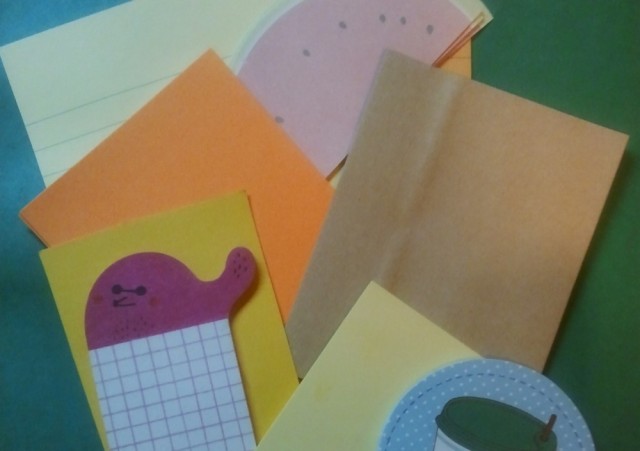One possible way to develop professionally as a teacher is to share ideas and activities, doubts and insights, problems and solutions with others. (well, stating the obvious!) What many teachers shared with me as their own challenge has been the fact that they simply don’t know how to present those ideas on a conference. The main concern is that the audience will be their peers, who are mostly as experienced as the presenters are, and sometimes have been in the classroom much longer than those who are taking the lead in a session. What often makes me feel surprised is that these teachers who are worried about such presentations are very confident classroom teachers themselves.
An idea I found useful (and then had positive feedback on from the teachers in our school) is to have a kind of ‘checklist’ of various possible formats and types of presentations. I created this list and re-read it from time to time, especially before a conference sharing session. I sometimes show it to colleagues on teacher training programs we run together and they add a new idea, or a link, or a video, or reflect on how this or that presentation went. Interestingly, this list can provoke a lot of discussions far beyond the types of sessions that exist…
Anyway, sharing the list below! 🙂

Various ways to plan: I really enjoy experimenting with How+Where I put ideas together 🙂
Seminar includes active audience participation through experiencing and discussing tasks provided by the presenter, or more precisely, a facilitator. An interactive format ensures that everyone is engaged.
Panel Discussion allows different people to present their views on a topic in a short space of time, after which the discussion is opened up to the audience. The ideas are often controversial or opposing each other. I personally find this format a great way to co-present with one or more colleagues, especially if you have different points of view about the same idea. Provokes a lot of response from the audience! One example comes from the Directors of Studies Conference at IHWO (even though the video is a bit long but great people and good ideas; watching by 10-15 minutes slots was helpful to me)
Swap Shop invites participants to bring their teaching materials or ideas they use in the classroom. They can include lesson plans, cards, exercises, pictures, posters and any other self-made materials. At the swap shop the participant will have a chance to look through and exchange their materials. Everyone leaves with a pile of new ideas!
Poster Presentation advertises your approach, techniques and findings in your work. It combines text and graphics or pictures to make a visually pleasing presentation. You may be required to explain your main points and answer questions, but the audience should be able to understand the poster’s concept even if the presenter is not standing beside the display.
Round Table discussion doesn’t have a presenter, only a facilitator. There is an issue, or a number of questions, and all the people in the room/around the table are equal participants/opinion makers. I participated in round table discussions of Directors of Studies, school coordinators, etc.
Demonstration Lesson: the participants witness a procedure or a technique in practice and then discuss (process) how helpful it was, variations, etc. All the participants can be the ‘guinea pigs’, or half of the group could be observing and the other half participating. A more challenging scenario would be to bring real language students in and have the audience observe the lesson. I heard about this being done but have never seen it myself.
Talk describes what you are doing, or have done, in relation to theory or practice or may show on materials or products. Its content is relevant to the participants who work outside your local context.
Lecture: an oral presentation intended to present information or teach people about a particular subject, for example by a university or college teacher. (my personal understanding is that a talk is less formal and more reflective and a lecture is more formal/academic and brings more ‘official’ data and sources, etc.)
Loop Input: the procedure / technique used in the session is a model of the procedure / technique which the presenter wishes to transmit (e.g. a session about reading without translation is done in a form of reading texts about reading without translation and doing tasks on them) A quick google search shows that it was a popular format in 1980s, but I still think that reaching the level where you can do loop input is a mastery level. Maybe I am a little old-fashioned though? 🙂
Pecha Kucha: a presentation format in which 20 slides are shown for 20 seconds each; the slides change automatically, so the presenter’s comments are timed & there is some connection between what a presenter is saying and the slides. This website has a lot more information, and what I really like is a part called a Presentation of the Day. I am now thinking that the audio plus slides can become a wonderful listening lesson material…
One thing I would like to try one day is speed dating (Either as a conference presentation or a session format on a training course in January!)
Finally, a question: are there any other types you have seen or done? Heard about? Invented?

Pingback: Conference Presentation: preparing to share | Wednesday Seminars
Pingback: (Interactive) Lectures in Teacher Training | Wednesday Seminars
Pingback: PD Challenge: New and Experienced Teachers | Wednesday Seminars